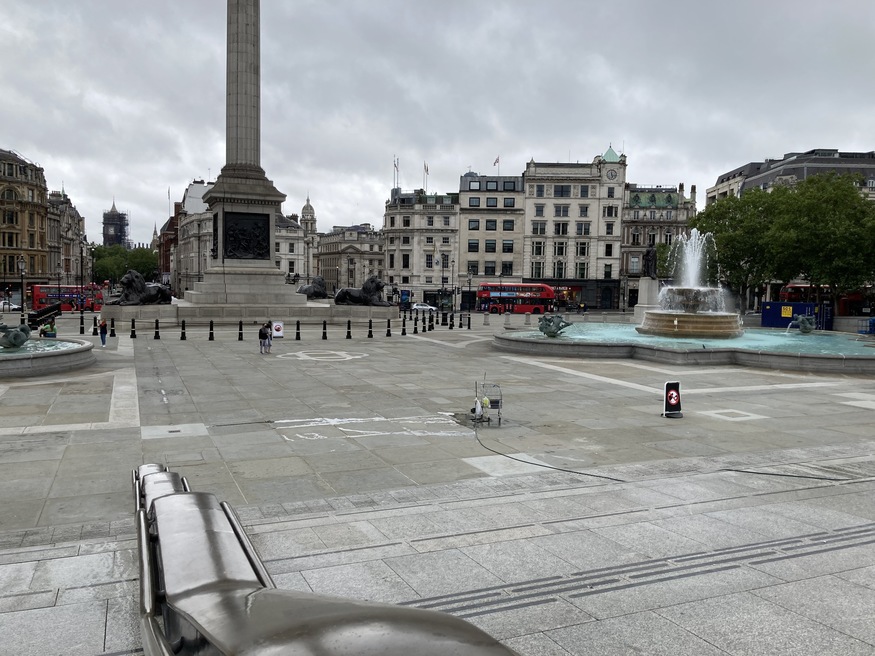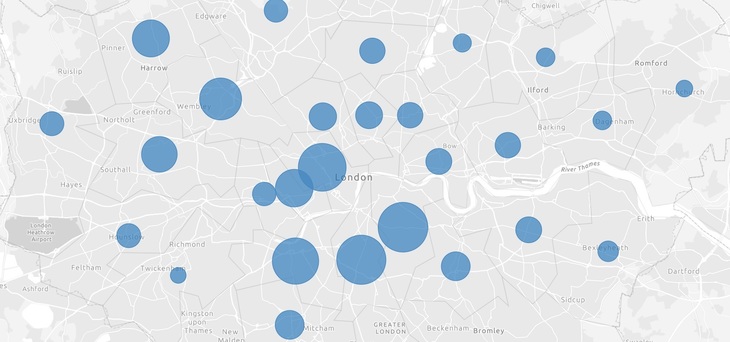
We never thought we'd see London close down, but in March 2020, that's more or less what happened. The coronavirus pandemic is far from over, but we thought we'd take stock of everything that's happened so far, during this unprecedented period. (This article was published November 2021, at which time all info was as up-to-date as possible.)
How many people have had coronavirus in London to date?
The total number of covid cases identified in London is 1,206,334 — that's around 15% of England's total 7,953,228 cases*.

How many people have died of coronavirus in London to date?
The total number of covid-19 deaths reported in London hospitals of patients who tested positive for the virus is 16,113. The total number of deaths in London hospitals where covid was mentioned on the death certificate is 1,333. According to Trust for London, the most deprived 20% of London's neighbourhoods saw, on average, 23 more covid-related deaths per 100,000 than the least deprived 20% of neighbourhoods.
How many people in London are vaccinated against coronavirus?
6,077,696 Londoners have received their first vaccine dose and 5,475,031 have received their second* — which is about 60% of all Londoners. The number of booster shots given out wasn't available at time of publication.

What happened to NHS Nightingale?
In March 2020, a makeshift hospital, NHS Nightingale, was assembled inside ExCeL London in the Docklands, and fitted out with beds equipped with ventilators and oxygen, in order to mitigate the demands of Covid on the medical services. In fact, it reportedly only treated 54 patients in the first wave. It subsequently became a vaccination centre. The hospital was always supposed to be temporary, and is no longer in use.
What was the coolest place to get your jab?
The Science Museum, Twickenham Stadium and Westminster Abbey were among the famous London institutions that opened as makeshift vaccination centres during the pandemic, which was pretty cool. It's unclear if anything similar will happen for Londoners getting their booster shots.

How many people were furloughed in London?
At the peak of the government's furlough scheme — which launched in April 2020 — over one million Londoners were furloughed (that's about a ninth of the city's population). By the end of January 2021, 712,200 of London jobs were still furloughed. It's difficult to be precise on how many Londoners are currently unemployed because of Covid, but for the three months ending July 2021, Greater London's unemployment rate was 6% (that's 306,000 unemployed Londoners — around 63,000 more than for the three months ending March 2020).
How badly was tourism hit?
Extremely. To give an idea, in 2019, there were 15 million international visitors to London. In 2020, there were just 2.5 million. Now that most attractions have reopened, and restrictions on overseas travel have been relaxed (including from the USA, which is a major demographic for London), figures are set to shoot up in 2022 — though by now, we've all become wary of counting our chickens.

How did coronavirus affect transport in London?
TfL closed a number of tube stations as the first lockdown was announced, although, while many worked from home or were furloughed, the network remained open for essential workers throughout the height of the pandemic.
By September 2021, there'd been a huge spurt in public transport users, and presumably that's only grown with workers coming off furlough, and the boost of tourism to the city. Still, disruption to London's transport is ongoing. Crossrail has faced further delays to its already tardy schedule. The night tube is coming back at the end of November, but only as a limited service.
It's still mandatory for all non-exempt people to wear masks on public transport in London (which makes so much sense when you think how confined/close quarters tubes, trains and buses are). Though it's not strictly legal, it is a 'condition of carriage' set out by TfL. And if you're not complying, you're a selfish wazzock. Just sayin'.

What was permanently closed in London due to coronavirus?
Friend of Londonist Laura Porter put out a tweet earlier in the year — asking people to name places they'd noticed had closed for good since March 2020. Though we can't confirm all of these closures were prompted by the pandemic, sad losses to London include: The Ace Hotel in Shoreditch, highly-regarded restaurant the Ledbury, old school cafe the Shepherdess, Instagram favourite Dominique Ansel, and the Shaftesbury Avenue branch of nauticalia purveyors, Arthur Beale.
So, is London open again?
More or less. As we say, things like the night tube and night bus services aren't up to full strength, although most shops, bars, restaurants, theatres and the like are up and running again (with social distancing generally quite casual). There's actually stuff on the calendar for Christmas this year too — like ice skating and drinking pop-ups, which is nice. As we head into winter 2021, we'll see if anything changes.
*As of 8 November 2021
**As of 9 November 2021




